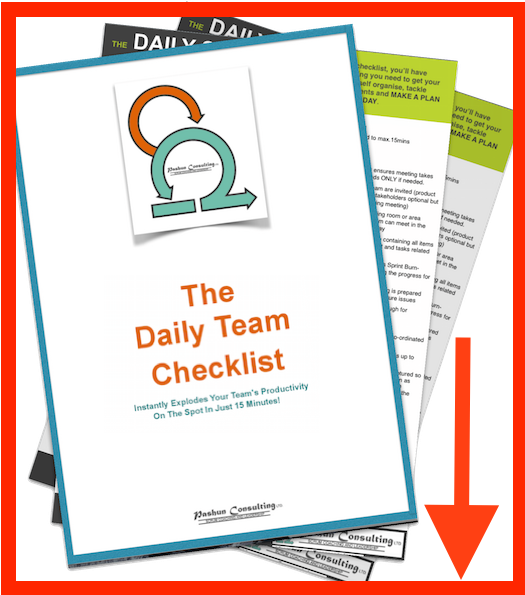Sprint Backlog (scrum sprint,sprint backlog scrum,scrum backlog,sprint product backlog)
6 reasons why SPRINT PLANNING works
Background
The sprint planning session is a meeting in which the team plan and commit to the stories that they will work on in a sprint. The meeting lasts no more than four hours for a two-week sprint. There are two halves to the meeting, the “what” and the “how”. In the first half of the meeting, the product owner presents the list of features that he would like the team to deliver from the product backlog. He explains them and the team ask questions. In the second half of the meeting, the team break the stories into technical tasks and estimate them. The meeting ends with a commitment from the team to complete the sprint backlog within the sprint.
(NOTE: Struggling to understand the basics of scrum quickly? Get the Power of Scrum Audio Book. You can use it to get a complete overview and foundation in scrum fast, before even having to “roll-out” a single scrum practice to your team. Check it out here.)
Reasons
1. The planning process gives solid understanding: As opposed to other methods, it is the act of discussing and understanding the proposed sprint backlog that gives the team a solid understanding of what they are building. There is no reliance on a document to do this.
2. Expert estimates: The estimates given at planning are from the most reliable source possible – those doing the work, as opposed to a single team lead.
3. Reliable estimates: Rather than individual estimates, the shared view of the team is reflected in the estimates. This is a more reliable view since it takes into account all perspectives.
4. Motivating, enjoyable experience: Planning gives a chance for people to interact and to some extent socialise. This is usually seen as an enjoyable experience as long as it is strictly timed and especially if planning poker is used as a technique (doughnuts also help greatly).
5. Product closer to customer desires: The product owner brings the business view to the session and the team bring the builder’s view. This results in a product much closer to what the customer desires.
6. Strict time-box keeps morale high: The time-boxed session must run to a strict time scale. A further session can be planned if absolutely necessary, but this strictness prevents fatigue.
(NOTE: Struggling to understand the basics of scrum quickly? Get the Power of Scrum Audio Book. You can use it to get a complete overview and foundation in scrum fast, before even having to “roll-out” a single scrum practice to your team. Check it out here.)


